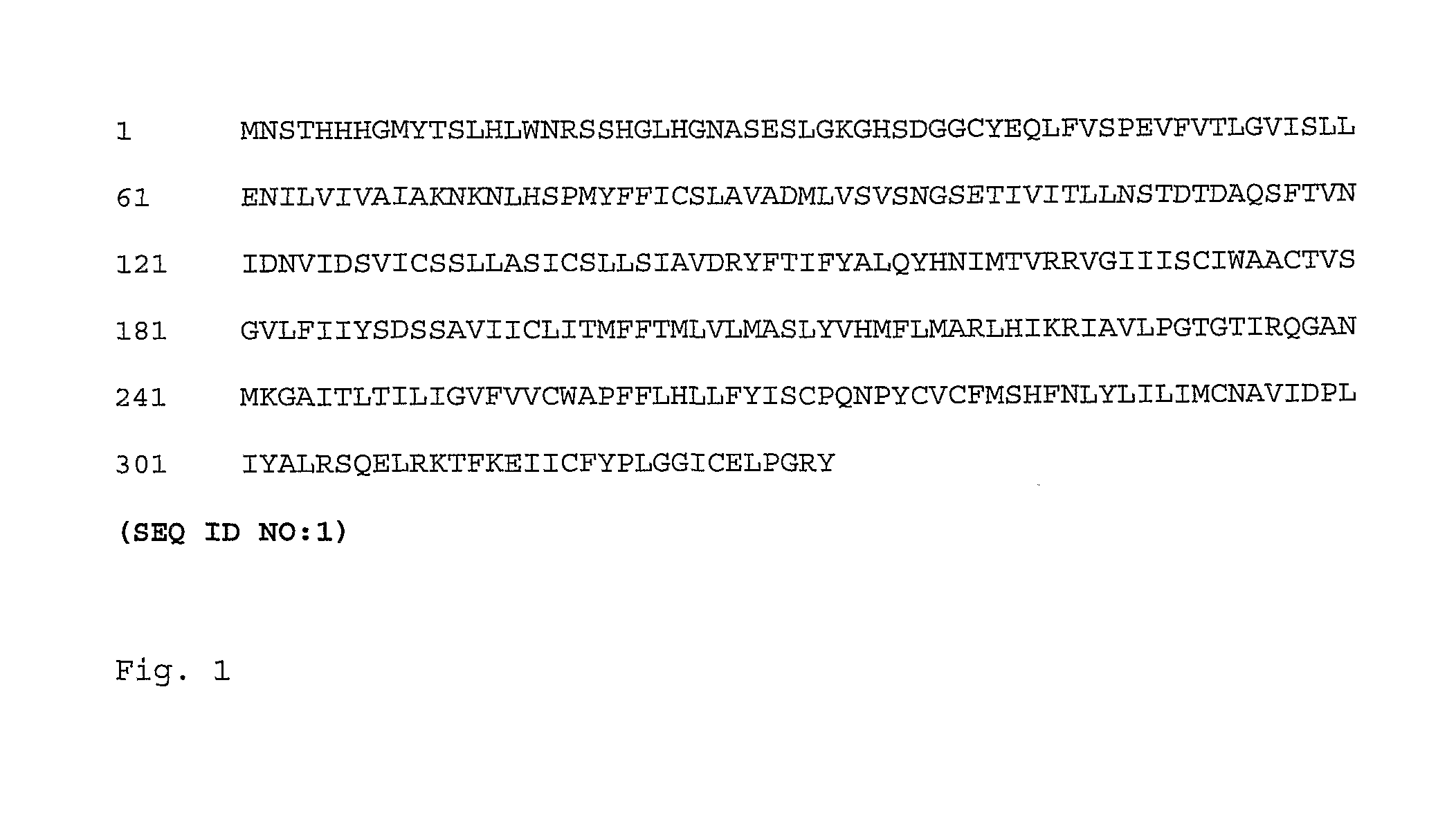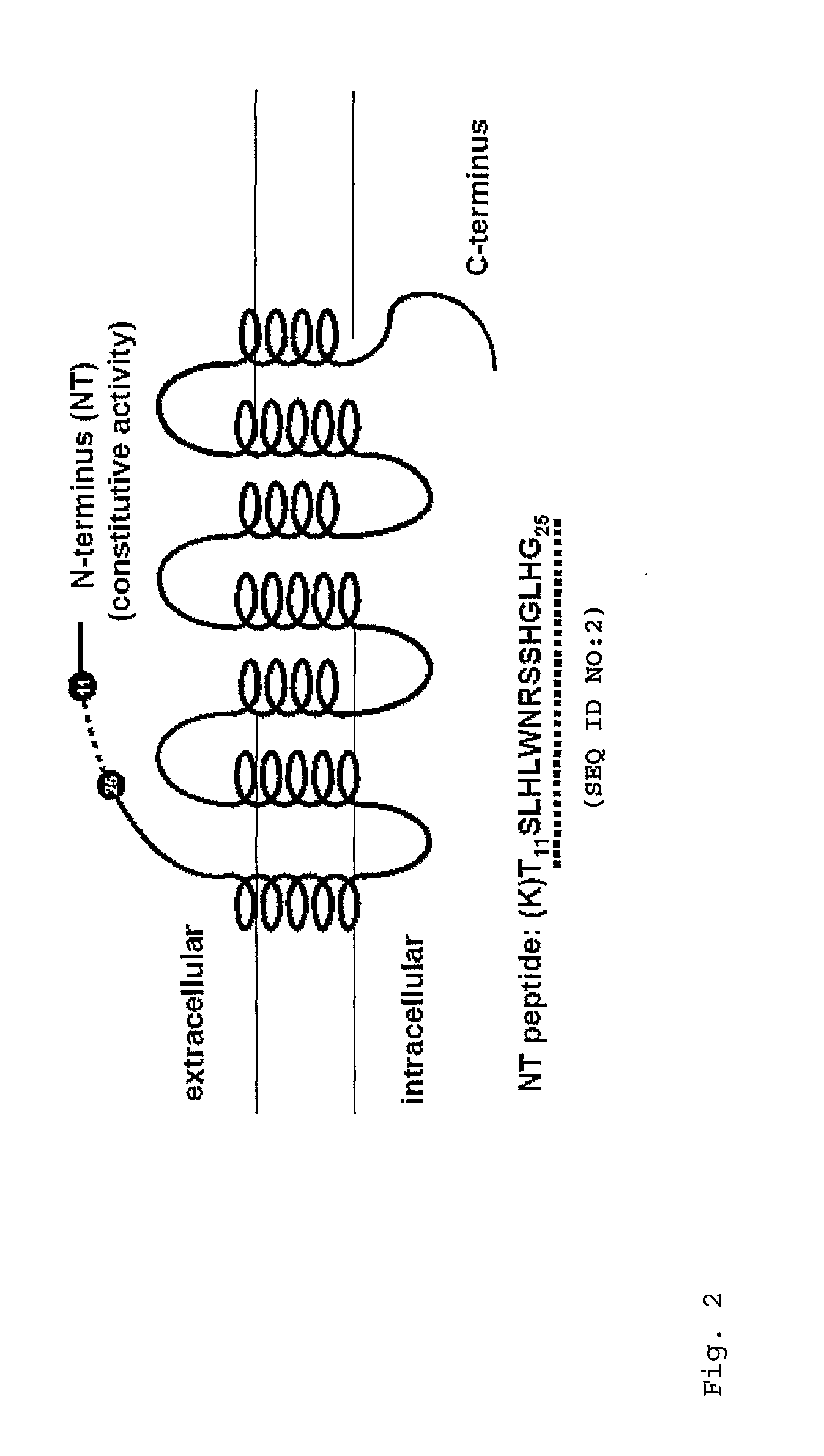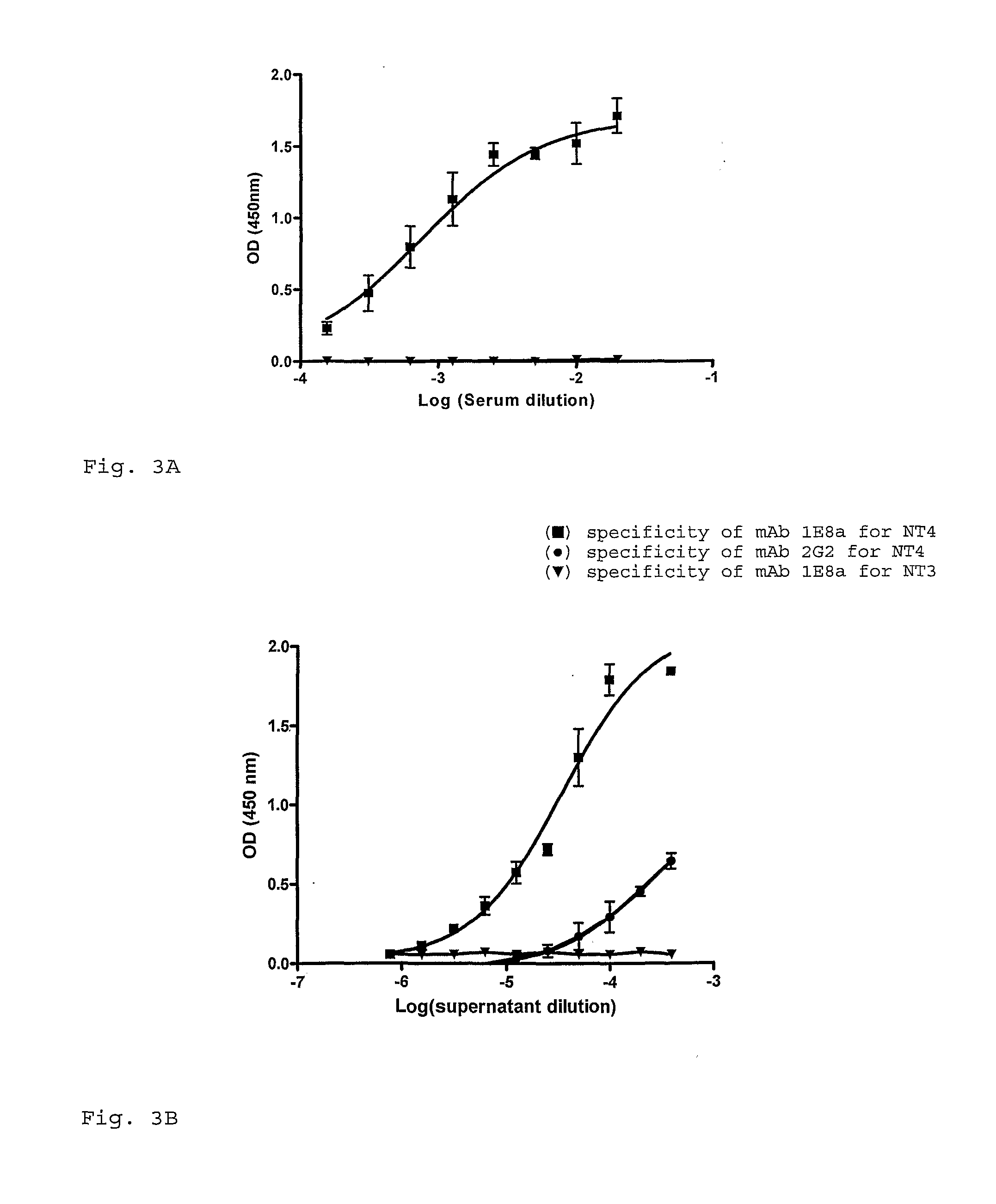Monoclonal antibodies and binding fragments thereof directed to the melanocortin-4 receptor and their use in the treatment of cachexia and related conditions and diseases
a technology of melanocortin-4 and monoclonal antibodies, which is applied in the direction of antibody ingredients, cyclic peptide ingredients, metabolism disorders, etc., can solve the problems of loss of fat and skeletal muscle mass, and the treatment is less than ideal, and achieve the effect of increasing the appetite of a mammal
- Summary
- Abstract
- Description
- Claims
- Application Information
AI Technical Summary
Benefits of technology
Problems solved by technology
Method used
Image
Examples
example i
Materials and Methods
[0063]A. Production of mAbs Against the MC4-R
1. NT4 and NT3 Peptide Synthesis
[0064]The amino acid sequence of the rate MC4-R consists of 332 amino acid residues (SEQ ID NO:1; NCBI Accession No. NP037231) as shown in FIG. 1. In the present invention, peptides corresponding to the N-terminal domain of the MC4-R (“NT4 peptide”, illustrated in FIG. 2) and N-terminal domain of the MC3-R (“NT3 peptide”) were synthesized. The NT4 peptide has the amino acid sequence TSLHLWNRSSHGLHG (SEQ ID NO:2) consisting of residues 11-25 of the rat MCR4-R (see Peter J C et al., Am. J. Physiol. Regul. Integr. Comp. Physiol. iol. 2007; 292(6):R2151-8). The NT3 peptide has the amino acid sequence ASNRSGSGFCEQVFIKPEV (SEQ ID NO:3) consisting of residues 26-44 of the rat MC3-R (SEQ ID NO:3). The peptides were synthesized as set forth in Neimark J and Briand J P, Pept. Res. 1993; 6(4):219-28.
2. Immunization
[0065]C58BL / 6 mice were immunized with 25 μg of the free peptide NT4 emulsified in c...
example ii
Results
[0082]A. Peptide Specificity of the mAbs
[0083]The enzyme immunoassay was performed an the free peptides NT4 and NT3. As shown in FIG. 3A, the serum of the mouse used for hybridoma production showed a highly specific and pronounced response against the immunogenic peptide NT4 derived from the N-terminus part of the MC4-R but not against the NT3 peptide derived from the N-terminus part of the MC3-R. Although the polyclonal response was high, only two clones could be conserved until subcloning and amplification: mAb 1E8a and mAb 2G2 both IgM antibodies. As shown in FIG. 3B, the specificity of mAb 1E8a for the NT4 peptide corresponded to the polyclonal mouse response.
B. Sequence of the Paratopes
[0084]The variable domain of the heavy and light chains of mAb 1E8a, and the variable domain of the heavy chain of mAb 2G2, were cloned and sequenced.
[0085]The nucleic acid and encoded amino acid sequences of the variable domain of the heavy chain of mAb 1E8a are shown in FIG. 4A (SEQ ID N...
PUM
| Property | Measurement | Unit |
|---|---|---|
| molecular weight | aaaaa | aaaaa |
| molecular weight | aaaaa | aaaaa |
| molecular weight | aaaaa | aaaaa |
Abstract
Description
Claims
Application Information
 Login to View More
Login to View More - R&D
- Intellectual Property
- Life Sciences
- Materials
- Tech Scout
- Unparalleled Data Quality
- Higher Quality Content
- 60% Fewer Hallucinations
Browse by: Latest US Patents, China's latest patents, Technical Efficacy Thesaurus, Application Domain, Technology Topic, Popular Technical Reports.
© 2025 PatSnap. All rights reserved.Legal|Privacy policy|Modern Slavery Act Transparency Statement|Sitemap|About US| Contact US: help@patsnap.com



